We’ve discussed before how today many home buyers are skipping the 20 percent down payment. Even so, with prime buying and selling season upon us once again, let’s revisit this critical information. Helping potential home buyers realize they need less than they think to invest in a home might just be one of our favorite topics.
While making a larger down payment certainly offers benefits—namely, a lower monthly mortgage bill—2019’s reality can make this financial feat difficult. According to the Seattle Times, “In the seven years since the housing crash ended, home values in more than three-quarters of U.S. metro areas have climbed faster than incomes.” A recent survey from Country Financial shows that 40 percent of buyers say the greatest financial barrier to owning a home is affording the down payment.
Nerdwallet recommends not emptying your savings to find money for the down payment and closing costs. This will only leave you on financially shaky ground after you buy the home. What to do, then, if investing in real estate is one of the best ways to earn passive income, but you don’t have the cash to get started?
Even if the 20 percent down payment seems impossible, you can still invest in a home. First, get in touch with Pickett Street at (425) 502-5397 or info@pickettstreet.com, and attend the team’s free home buyers class (the next one is Saturday, June 15th!).
Second, here are a few ways to buy with less than 20 percent down.
1. Explore zero down options.
Here’s Pickett Street’s list of mortgages that require either zero down payment, or a very small down payment. Both the Department of Veteran Affairs and the Navy Federal Credit Union offer mortgages with zero down payments for qualified veterans and active-duty service members. The US Department of Agriculture loan also requires zero down and is very popular—check out this USDA map to see if your area qualifies.
2. Take advantage of state assistance programs.
Washington’s Housing Finance Commission offers two home loan programs: the Home Advantage and House Key Opportunity. If you receive a home loan from one of these programs, you may also qualify for WSHFC down payment assistance—on average, these low-interest rate loans comprise about $10,000.
Additionally, check out how Margaret Smith purchased and fixed up her first duplex using an FHA 203K rehab loan.
3. Pay off your credit cards.
Okay, yes, this can be a tough one. But most experts emphasize how critical this step is in investing in a home. Lenders review your debt-to-income ratio, so the better your credit score, the better your mortgage rate. Additionally, paying off your credit card as quickly as you can may help you save hundreds or even thousands of dollars on interest that you can then put toward that down payment.
However, Motley Fool analysts assert that credit card debt is different than student debt. According to financial writer Maurie Backman, student debt doesn’t need to be a barrier to homeownership. “Just take a look at your finances and make sure you can actually afford this home,” says Backman, “keeping in mind that you’ve got this [student debt] payment every month for the foreseeable future.”
Forbes financial analysts agree that student loans shouldn’t prevent you from buying a home. Just make sure that you focus on maintaining a strong credit score, manage your debt-to-income ratio, keep credit card use low, and get pre-approved for a mortgage.
For more assistance with all of your down payment and other real estate questions, contact Pickett Street’s experts at (425) 502-5397 or info@pickettstreet.com.
